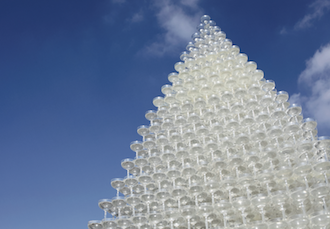Prosecco. Let’s get that word out in the open. Every investigation of cava has to have a view on prosecco. This, after all, is the wine that gives cava producers bad dreams. Yet it wasn’t so long ago that cava was where prosecco is now. Then cava was the first choice for girls’ nights in, weddings, baby showers and a great value champagne substitute for cocktails. I’m going to argue that cava has the potential to be so much more than prosecco.
Cava, worth £118.7m (all stats Cava Institute) is the third largest sparkling wine behind prosecco (£396.5m) and champagne (£249m) in the UK off-trade. It’s very easy to see where it all went wrong. The short-termist strategy that put volume before value and sales before quality was bound to go pop in the end. Can it ever claw back its quality and regain its reputation and its sales?
The latest smoke signals from the Cava Institute aren’t promising. Domestic sales may be up and in exports the trends may be positive, but this is “with the exception of Belgium and the UK, which are showing a reduction in sales due to price policies”. Given that the UK has been cava’s top export market, this is serious news.
Cava remains very big numbers – there are plenty of bottles sold to satisfy its 244 producers. But the race to the bottom has ended with some seriously poor wines. Traditional cava has a depressing list of disabilities – grown so much further south than Champagne, most grapes come from warm areas and lack the crisp acidity we have come to expect from a quality traditional method sparkling. With a minimum age of nine months, the young wines hardly have a chance to develop any secondary characteristics. That has, until recently, meant an aroma which wandered somewhere between pears and burnt rubber.
Cava Rosado as it used to be, whether from Trepat or Monastrell, deep-coloured and sturdy, is never going to compete with ethereal rosé champagnes (Rosado is currently 20% of UK off-trade cava). And once it won a reputation for being cheap then no sensible independent merchant or sommelier is going to want to give it space. As for consumers, who is going to dare to be seen with cava when prosecco – there, it’s that P word again – is softer, frothier, and fruitier. What’s more it’s cheap, but with none of the low-rent stigma belonging to cava.
That’s enough of the bad news. I am a Spain nut, and a devout believer in the second coming of sherry, another problematic category. Just as for sherry, I believe there is potential for cava to re-establish itself. It works in similar ways – through rediscovering uniqueness, history, quality and then marketing the wines intelligently to provide new appeal to sommeliers, independents and consumers.
UNIQUE IDENTITY
Cava is made by the traditional method, like Champagne. Prosecco isn’t. This is what can give its complexity – though it does make it more expensive to produce, even with the astonishing mechanisation installed so early in the great cava enterprises. The first sparkling was made in 1872, but the cava DO was not created until 1986. Because there were a few people already making traditional method sparkling outside Penedès, they were included in the DO. Thus cava is one of the rare denominations in the world that cannot relate to a geographical origin, or lay claim to terroir – a sense of place. That is a clear obstacle to reputation in these days when we want to focus on artisan production from single vineyards.




